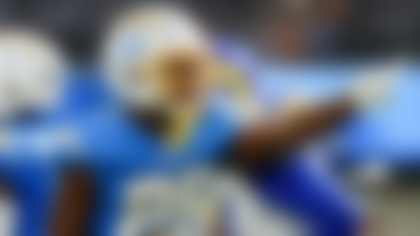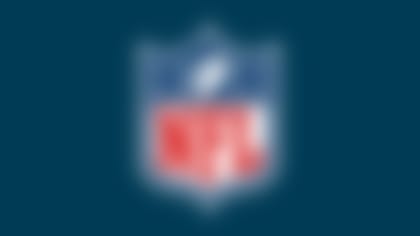Anatomy of a Play
Anatomy of a Play extras:
»
Beisel's role in punt block
»
More special teams heroics
More Anatomy of a Play:
»
Dolphins' new wrinkle for 'Wildcat'
»
Schaub's game-winning QB keeper
There's an old cliché that states, "It takes all three phases to win."
The Cardinals proved the oft-uttered words last Sunday as their third phase did something never before seen in the NFL. Arizona's special teams unit returned a blocked punt for a touchdown ... in overtime. For a team that hasn't experienced many big moments, Monty Beisel's scoop-and-score was a momentous occasion.
After Dallas' offense went three and out to begin overtime, they faced a fourth and 17 from their own 14-yard line. As a matter of course, the Cowboys lined up for their eighth punt of the game. However, this wasn't as easy as it looked. On their sixth and seventh punts, Dallas' personnel had differed from the first five. The reason for the changeup was an injury to the starting left guard on the punt team, Anthony Spencer.
Spencer's injury forced Kevin Burnett to move from left tackle to left guard and rookie running back Tashard Choice to sub in at left tackle. Burnett is an experienced special teamer who made the quick transition to guard with ease. But Choice was running the ball against ACC defenses last year. His experience at left tackle was limited to what he'd done in this preseason.
Meanwhile, the Cardinals special teams captain, Sean Morey, is an eight year veteran. He has made a living off the third phase of the game and by making rookies, like Choice, pay for their mistakes.
On Dallas' seventh punt, the one before the touchdown, Morey aligned as a defensive end would -- in a three-point stance, on the outside shoulder of Choice. Morey immediately noticed the new left tackle and paid close attention to every move the rookie made. The Cardinals had a return called and Morey's responsibility was to "hold up" (a.k.a. block) Choice.
Cardinals' special teams coach Kevin Spencer has a rule that basically states, if your man disappears, you rush. On the seventh punt, Choice was Morey's man and he "disappeared," meaning he blocked inside and paid no attention to Morey. Instead of following the rule and rushing, Morey held up a different Dallas player, simply making a mental note of Choice's mistake. On the eighth punt Morey would follow the rule.
The same return was called and Morey aligned in the same position, on the outside shoulder of Choice. At the snap, Choice "disappeared" again, focusing his attention inside. But this time Morey rushed, attacking punter Mat McBriar. Normally punts are blocked with a player's hand or forearm, but Morey got in so fast he took the ball off his gut.
Veterans such as Morey don't make huge money but make a huge impact in the third phase of the game. If he's lucky, Choice will play long enough to enjoy the other side of a play like this one. For the Cardinals, it was arguably one of the biggest moments in franchise history. As for the Cowboys, they hadn't allowed a touchdown off a blocked punt since 1983. Certainly, this play was no cliché.



